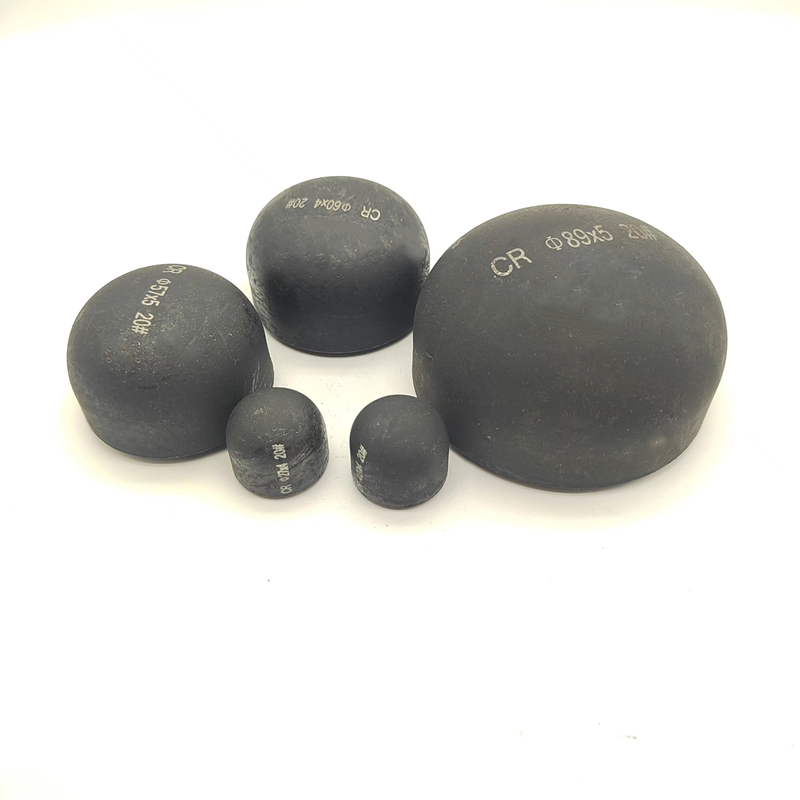Pipe caps are generally used for the ends of pipes, and heads are used for the upper and lower parts (vertical equipment) or left and right ends (horizontal equipment) of container equipment. Pipe caps generally have outer diameter sizes, such as 219, 273, 325 and so on. Pipe caps are also called plugs, caps, pipe caps, and bulkheads. They are pipe fittings that are installed on the outer threads of the pipe end to cover the pipe. It is used to seal pipelines and has the same function as pipe plugs, but the pipe cap can be screwed directly on the pipe without the need for other pipe fittings. It is generally used at the sampling port at the end of the pipe. After the sampling is completed, the pipe cap must be screwed on. In special cases, after the pipe cap is screwed off, the pipe can be connected with a thread to temporarily continuously roll or pump material.
Pipe caps are generally used when the pressure is low to facilitate disassembly and maintenance. Pipe caps are generally not used under high and medium pressure conditions. Pipe caps include designs of convex pipe caps, conical shells, reducing sections, flat caps and shrinking openings. Pipe cap parameters: Stainless steel: 304304L316316L321 Diameter: DN15-DN1200 Wall thickness: SCH5-SCH160 Standards: ASME, DIN, JIS, BS, GB/T, JBSHHG.
The shapes of pipe caps and heads are similar, and most of them are made of stainless steel. The pipe caps are smaller in size and can be forged; the heads are larger in size and are generally pressed with steel plates. The pipe caps are generally used at the ends of pipes, and the heads are used for The upper and lower parts of the container equipment (vertical equipment) or the left and right ends (horizontal equipment). Convex pipe caps include: hemispherical pipe caps, oval pipe caps, dish-shaped pipe caps and spherical caps. From the perspective of stress, convex caps are gradually worse than hemispheric caps, but from the perspective of manufacturing difficulty, they are gradually easier to manufacture.
Generally speaking, the inner diameter of the head, such as 1 meter, refers to the inner diameter of the cap. There is no requirement for the transition part (unlike the standard oval). Generally, only the diameter and length can be found in the manual, and the straight edge The portion is longer. The pipe cap is just a plug for the pipe. If the DN exceeds 300, it must be replaced by a head seal. If it is under pressure, the strength must be checked. Pipe caps are used in water, beverages, beer, food, petrochemicals, nuclear power, machinery, medical equipment, fertilizers, shipbuilding, waterproofing, pipelines, etc. Packaging: wooden boxes, cartons Service: providing technical consultation, guidance on installation, etc. Disc-shaped pipe caps Avoid splicing at r, which will cause thinning and high stress.
Author: Maria Yang
Post time: Mar-01-2024

